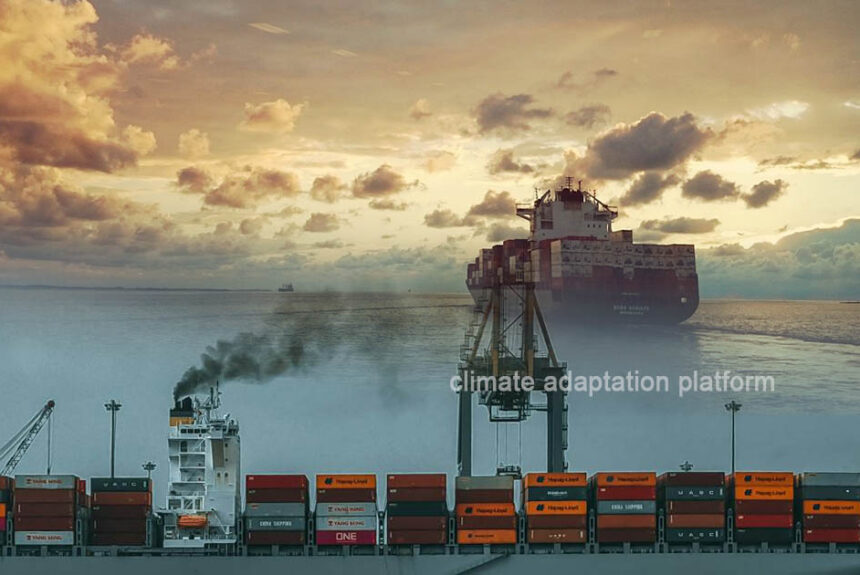The North Atlantic Ocean warmed more slowly than other regions for many years. However, in early 2023, this warming accelerated and surpassed researchers’ predictions based on climate models.
By March 2023, sea surface temperatures in the northern Atlantic Ocean had risen sharply, causing a marine heatwave that affected much of the region, stretching from Greenland to the Caribbean. This heatwave bleached coral and contributed to powerful storms in Europe, including Hurricanes Helene and Milton in the United States.
The Gulf’s extremely warm water stoked the rapid intensifications of Hurricane Helene and Milton. Developing tropical storms can suck up heat from warm seawater, dragging the humid air upward where it condenses, releasing that heat into the storm’s core (Gramling, 2024).
Many scientists were surprised by the sudden anomalous heating of the North Atlantic Ocean, which led to months of analysis to determine its causes. Their findings identify several contributing factors: greenhouse gas emissions, an extreme El Niño event that began in June 2023, and a more controversial explanation involving changes in shipping regulations.
Shipping emissions masked climate change effect
The significant expansion of global shipping over recent decades has resulted in a marked increase in sulphur dioxide emissions. These emissions are widely recognized as harmful aerosol pollutants that negatively impact air quality and human health. In response to the serious risks associated with these ship-emitted aerosols, national and international legislation has been implemented to reduce their release into the atmosphere.
Interestingly, while these aerosols pose health risks, they also play a crucial role in climate regulation through their effect on cloud formation. Before cloud droplets can develop, tiny particles, or aerosols, must be present in the atmosphere for water vapour to condense around. These particles can include various pollutants, salt grains, or dust specks. Among these, sulphate aerosols derived from sulphur dioxide emissions generated by commercial shipping are particularly noteworthy for their ability to act as cloud condensation nuclei.
An abundance of these particles leads to the formation of brighter clouds, which reflect more sunlight in space and can help cool the planet, offsetting some of the warming caused by greenhouse gases. However, reducing anthropogenic aerosol emissions can lead to fewer cloud condensation nuclei, diminishing these aerosols’ cooling effect.
A study published in May 2024 and titled “Abrupt reduction in shipping emission as an inadvertent geoengineering termination shock produces substantial radiative warming” reveals that new shipping regulations aimed at reducing sulphur content in emissions—intended to decrease harmful pollution and improve air quality have unintentionally accelerated ocean warming.
The study notes that new International Maritime Organization (IMO) regulations regarding the sulphur content of international shipping fuel took effect on January 1, 2020. The IMO 2020 regulation (IMO2020) reduced the maximum sulphur content from 3.5% to 0.5%. While IMO2020 aims to benefit public health by decreasing aerosol pollution, this reduction may temporarily accelerate climate change by affecting the brightness of clouds over the world’s oceans.
Another study, “Has Reducing Ship Emissions Brought Forward Global Warming?” published in the journal AGU in August 2024, indicates that the 2020 shipping regulations have significantly diminished the formation of bright, reflective clouds known as “ship tracks.”
These ship tracks contain sulphur-based aerosol particles that act as effective Cloud Condensation Nuclei (CCN). Clouds with a more significant number of CCN tend to have more cloud droplets and higher albedo, which enhances their ability to reflect sunlight into space, thereby promoting radiative cooling.
Researchers have observed a slight warming effect since implementing these regulations, especially in the Northern Hemisphere. This raises concerns that the changes in shipping practices might inadvertently accelerate ocean warming.
Sources:
Asher, C. (2024, November 13). Shipping emissions reduction sheds light on marine cloud geoengineering. Mongabay. Retrieved from https://news.mongabay.com/2024/11/shipping-emissions-reduction-sheds-light-on-marine-cloud-geoengineering/
Gramling, C. (2024, October 9). Climate change fueled the fury of hurricanes Helene and Milton. ScienceNews. Retrieved from https://www.sciencenews.org/article/climate-change-hurricanes-helene-milton
Yuan, T., Song, H., Oreopoulos, L., Wood, R., Bian, H., Breen, K., Chin, M., Yu, H., Barahona, D., Meyer, K., & Platnick, S. (2024). Abrupt reduction in shipping emission as an inadvertent geoengineering termination shock produces substantial radiative warming. Communications Earth & Environment, 5(1), 1-8. https://doi.org/10.1038/s43247-024-01442-3
Gettelman, A., Christensen, M. W., Diamond, M. S., Gryspeerdt, E., Manshausen, P., Stier, P., Watson-Parris, D., Yang, M., Yoshioka, M., & Yuan, T. (2024). Has Reducing Ship Emissions Brought Forward Global Warming? Geophysical Research Letters, 51(15), e2024GL109077. https://doi.org/10.1029/2024GL109077



Leave a Reply